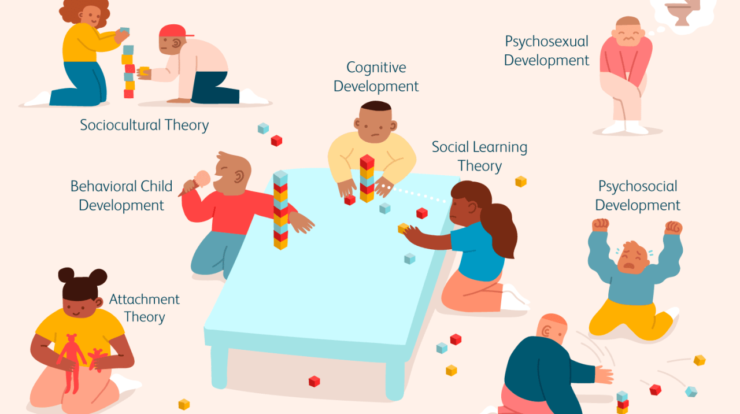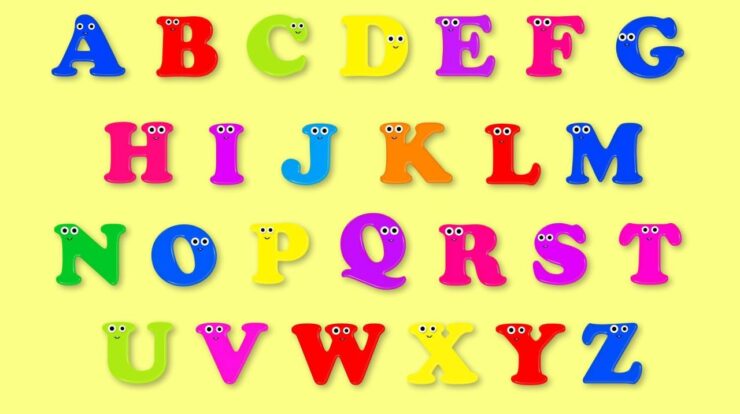As I have no patience for my ADHD child, let’s delve into the world of ADHD in children and explore strategies for managing it, building patience as a parent, communicating effectively, and seeking professional help and resources.
This comprehensive guide provides valuable insights, tips, and personal experiences to support parents navigating the challenges of raising a child with ADHD.
Understanding ADHD in children
ADHD, or Attention-Deficit/Hyperactivity Disorder, is a neurodevelopmental disorder that affects children and can persist into adulthood. It is characterized by difficulties in paying attention, impulsivity, and hyperactivity. This disorder can have a significant impact on a child’s daily life and their ability to function in school, social settings, and at home.
Common symptoms of ADHD in children
Children with ADHD may exhibit a variety of symptoms, which can be categorized into three main types: inattentive, hyperactive-impulsive, and combined. Inattentive symptoms include difficulty paying attention, being easily distracted, forgetfulness, and having trouble organizing tasks. Hyperactive-impulsive symptoms manifest as excessive movement, restlessness, difficulty staying seated, and impulsive behaviors such as interrupting others or acting without thinking.
Combined symptoms involve a combination of both inattentive and hyperactive-impulsive behaviors.
- Difficulty paying attention: Children with ADHD often struggle to concentrate on tasks or activities that require sustained focus. They may become easily bored or distracted, leading to incomplete work or difficulty following instructions.
- Hyperactivity: Children with ADHD may have an excessive amount of energy and may constantly be on the move. They may have difficulty staying seated or engaging in quiet activities.
- Impulsivity: Children with ADHD may act without thinking, blurting out answers, interrupting others, or engaging in risky behaviors. They may have trouble waiting their turn or following rules.
- Forgetfulness and disorganization: Children with ADHD may have difficulty keeping track of their belongings, staying organized, or remembering important tasks or appointments.
- Difficulty with transitions: Children with ADHD may struggle with transitions between activities or changes in routine. They may become agitated or resistant when asked to switch tasks or move from one setting to another.
Different types of ADHD
ADHD can be categorized into three different types: inattentive, hyperactive-impulsive, and combined. The inattentive type is characterized by difficulties in paying attention, being easily distracted, and forgetfulness. The hyperactive-impulsive type involves excessive movement, restlessness, and impulsive behaviors. The combined type includes symptoms from both the inattentive and hyperactive-impulsive types.
Challenges faced by parents
Raising a child with ADHD can present unique challenges for parents. These challenges may include:
- Managing behavior: Parents may struggle with addressing impulsive or disruptive behaviors exhibited by their child with ADHD. They may need to implement strategies to manage and redirect these behaviors effectively.
- Establishing routines: Children with ADHD often benefit from structured routines and schedules. However, establishing and maintaining these routines can be challenging for parents, requiring consistency and patience.
- Supporting academic performance: Children with ADHD may face difficulties in school, such as staying focused, completing assignments, or following instructions. Parents may need to work closely with teachers to provide appropriate support and accommodations.
- Dealing with social difficulties: Children with ADHD may struggle with social interactions, making and maintaining friendships, and understanding social cues. Parents may need to provide guidance and support in developing social skills.
- Managing emotions: Children with ADHD may experience heightened emotions or difficulty regulating their emotions. Parents may need to help their child develop coping strategies and emotional regulation techniques.
Strategies for managing ADHD in children

ADHD, or Attention Deficit Hyperactivity Disorder, can present challenges for children in various aspects of their lives. However, with the right strategies in place, it is possible to effectively manage ADHD symptoms and create a supportive environment for these children to thrive.
Creating a structured and predictable environment
A structured and predictable environment is crucial for children with ADHD. Having a consistent routine and clear expectations can help them feel secure and reduce anxiety. Here are some tips for creating such an environment:
- Establish a daily schedule: Set specific times for waking up, eating meals, doing homework, and going to bed. This routine provides a sense of stability and helps children with ADHD anticipate what comes next.
- Organize their physical space: Keep their room or study area clutter-free and well-organized. Use labels, bins, and shelves to help them find and put away their belongings easily.
- Provide visual cues: Use visual schedules, charts, or calendars to help children with ADHD understand and remember their daily tasks and responsibilities.
Developing a consistent daily routine
Consistency is key when managing ADHD symptoms. Establishing a daily routine can help children with ADHD stay focused, manage their time effectively, and reduce impulsivity. Here are some tips for developing a consistent daily routine:
- Set regular sleep patterns: Ensure that your child gets enough sleep each night by setting a consistent bedtime and wake-up time. Sufficient rest can improve their attention and overall behavior.
- Break tasks into manageable chunks: Help your child break down larger tasks into smaller, more manageable steps. This approach can prevent overwhelm and make tasks feel more achievable.
- Include regular breaks: Incorporate short breaks in their routine to allow for physical movement and mental relaxation. This can help improve focus and attention span.
Setting clear expectations and boundaries
Establishing clear expectations and boundaries is essential for children with ADHD. It helps them understand what is expected of them and promotes self-discipline. Here are some benefits of setting clear expectations and boundaries:
- Reduced confusion and frustration: Clear expectations provide children with ADHD a sense of structure and reduce confusion about what is expected of them.
- Improved self-control: By setting boundaries, children learn to regulate their behavior and make better choices.
- Enhanced self-esteem: When children understand and meet expectations, they develop a sense of accomplishment and improved self-esteem.
The role of medication and working with healthcare professionals
In managing ADHD symptoms, medication can play a significant role. However, it is crucial to work closely with a healthcare professional who can assess the child’s needs and prescribe appropriate medication. Here are some key points to consider:
- Consult with a healthcare professional: Discuss your child’s symptoms and concerns with a qualified healthcare professional who specializes in ADHD. They can provide an accurate diagnosis and recommend appropriate treatment options.
- Regular monitoring: If medication is prescribed, ensure regular check-ins with the healthcare professional to assess its effectiveness and make any necessary adjustments.
- Comprehensive approach: Medication should be seen as part of a comprehensive treatment plan that includes behavioral strategies, therapy, and support from parents, teachers, and other caregivers.
Behavioral strategies for managing ADHD symptoms
In addition to medication, behavioral strategies can be highly effective in managing ADHD symptoms. Here are some examples:
- Positive reinforcement: Reward and praise your child for their efforts and accomplishments. This can motivate them to exhibit desirable behaviors and develop self-confidence.
- Reward systems: Implement a reward system where your child can earn points or tokens for completing tasks or exhibiting positive behaviors. These rewards can be redeemed for privileges or preferred activities.
- Time management techniques: Teach your child time management skills, such as using timers, calendars, or visual schedules to help them stay organized and manage their time effectively.
Remember, every child with ADHD is unique, and not all strategies may work for every child. It is essential to tailor approaches to suit their individual needs and seek guidance from professionals experienced in managing ADHD. With patience, understanding, and consistent support, children with ADHD can thrive and reach their full potential.
Building patience as a parent of a child with ADHD
Being a parent of a child with ADHD can be challenging, especially when it comes to maintaining patience. It is important to remember that ADHD is a neurodevelopmental disorder that affects a child’s ability to focus, control impulses, and regulate their behavior.
As a parent, it is crucial to understand the unique needs of your child and find strategies to build patience while supporting their growth and development.
Personal experiences and stories
Many parents of children with ADHD have struggled with patience at some point in their journey. It can be frustrating when your child’s behavior is impulsive or when they struggle with paying attention. However, it is essential to remember that these behaviors are a result of their ADHD and not a reflection of their character or your parenting skills.One
parent shared their experience of feeling overwhelmed and losing their patience frequently. They found it helpful to seek support from other parents who were going through similar experiences. Through support groups and online forums, they were able to gain insights, share strategies, and feel less alone in their journey.
The importance of self-care
As a parent of a child with ADHD, taking care of yourself is crucial. It is easy to neglect your own needs while constantly focusing on your child’s challenges. However, self-care plays a vital role in building patience and managing stress.Make
sure to prioritize activities that help you relax and recharge. This could include hobbies, exercise, spending time with loved ones, or seeking therapy or counseling. Taking care of your own mental and physical well-being will allow you to approach parenting with a calmer and more patient mindset.
Tips for practicing mindfulness and managing stress
Practicing mindfulness can be beneficial for parents of children with ADHD. Mindfulness involves being fully present in the moment, without judgment. It can help you stay calm and grounded, even in the face of challenging behaviors.Some tips for practicing mindfulness include:
- Engage in deep breathing exercises to help calm your mind and body.
- Take short breaks throughout the day to focus on your breath and bring your attention back to the present moment.
- Practice self-compassion and remind yourself that it’s okay to make mistakes.
- Find activities that bring you joy and allow you to relax, such as meditation, yoga, or listening to calming music.
Managing stress is also crucial when it comes to building patience. Here are some strategies to consider:
- Establish a routine that provides structure and predictability for both you and your child.
- Set realistic expectations and celebrate small victories.
- Take breaks when needed and allow yourself time to rest and recharge.
- Reach out for support from friends, family, or support groups for parents of children with ADHD.
- Consider seeking professional help, such as therapy or counseling, to learn coping mechanisms and stress management techniques.
Benefits of seeking support from other parents or support groups
Connecting with other parents who are raising children with ADHD can be incredibly beneficial. Support groups provide a safe space to share experiences, exchange strategies, and receive empathy and encouragement. By connecting with others who understand the unique challenges of parenting a child with ADHD, you can gain valuable insights, find validation, and build a strong support network.Being
a parent of a child with ADHD requires patience and understanding. By sharing personal experiences, prioritizing self-care, practicing mindfulness, and seeking support from other parents or support groups, you can develop the resilience and patience needed to navigate the challenges of raising a child with ADHD.
Communicating effectively with your child with ADHD
Effective communication is crucial when interacting with a child who has ADHD. By employing specific strategies and techniques, parents can enhance their communication skills and foster a stronger connection with their child. In this section, we will discuss various strategies that can improve communication with a child who has ADHD.
Using clear and concise language, I have no patience for my adhd child
Using clear and concise language is essential when communicating with a child with ADHD. Keep your sentences short and straightforward, avoiding complex or ambiguous phrases. Break down tasks or instructions into smaller, manageable steps, ensuring that your child can easily understand and follow them.
By using clear and concise language, you can reduce confusion and increase comprehension.
Active listening
Active listening plays a vital role in effective communication with a child who has ADHD. It involves giving your full attention to your child, maintaining eye contact, and providing verbal and non-verbal cues to show that you are engaged in the conversation.
Practice patience and avoid interrupting your child while they are speaking. By actively listening, you validate your child’s thoughts and feelings, making them feel understood and valued.
Using visual cues
Visual cues can significantly enhance communication with a child with ADHD. Incorporate visual aids such as charts, diagrams, or drawings to supplement verbal instructions. Visual cues help your child better understand and remember information by providing a visual representation of the task at hand.
This visual support can improve their comprehension and organization skills.
The importance of empathy and understanding
Empathy and understanding are essential when communicating with a child with ADHD. Recognize that ADHD is a neurodevelopmental disorder that affects their ability to regulate attention and impulse control. Validate their feelings and experiences, and avoid criticizing or blaming them for their difficulties.
By showing empathy and understanding, you create a safe and supportive environment that encourages open communication.
Effective praise and encouragement techniques
Praising and encouraging your child in the right way can motivate and reinforce desired behaviors. Instead of generic praise, provide specific feedback that highlights their efforts and progress. For example, instead of saying “Good job,” you can say “I’m proud of how focused you were during your homework today.”
Use positive reinforcement techniques such as rewards or privileges to encourage and motivate your child. Celebrate their achievements, no matter how small, to boost their self-esteem and confidence.
Using visual schedules and aids
Visual schedules and aids are valuable tools for supporting communication and organization in children with ADHD. Create a visual schedule that Artikels daily routines and tasks, helping your child understand and anticipate what comes next. Use visual aids such as checklists, calendars, or color-coded systems to assist with organization and time management.
These visual cues can provide a sense of structure and reduce anxiety or overwhelm.Remember, effective communication requires patience, understanding, and the willingness to adapt to your child’s unique needs and challenges. By implementing these strategies, you can establish a strong and supportive relationship with your child, enhancing their overall well-being and development.
Conclusive Thoughts
In conclusion, while parenting a child with ADHD can be demanding, it is crucial to understand the condition, implement effective strategies, cultivate patience, maintain open communication, and seek professional help when needed. By doing so, parents can create a supportive environment that enables their child to thrive and reach their full potential.
Key Questions Answered: I Have No Patience For My Adhd Child
What is ADHD and how does it affect children?
ADHD stands for Attention Deficit Hyperactivity Disorder, which impacts a child’s ability to focus, control impulses, and regulate behavior. It can affect academic performance, social interactions, and daily functioning.
What are the common symptoms of ADHD in children?
Common symptoms include difficulty paying attention, hyperactivity, impulsivity, forgetfulness, disorganization, and difficulty following instructions.
How can I create a structured environment to manage ADHD symptoms?
Creating a structured environment involves establishing consistent routines, providing clear expectations and boundaries, and minimizing distractions. Consistency and predictability can help children with ADHD manage their symptoms more effectively.
Are there non-medication strategies for managing ADHD?
Yes, non-medication strategies such as behavioral interventions, positive reinforcement, reward systems, and time management techniques can be effective in managing ADHD symptoms. However, it is essential to work closely with healthcare professionals to determine the best approach for your child.
What are some tips for building patience as a parent of a child with ADHD?
Practicing self-care, seeking support from other parents or support groups, practicing mindfulness, and managing stress can contribute to building patience. It’s important to remember that patience is a skill that can be developed over time.


